#patrick mac
Explore tagged Tumblr posts
Text
Challengers X Rumours 🪕

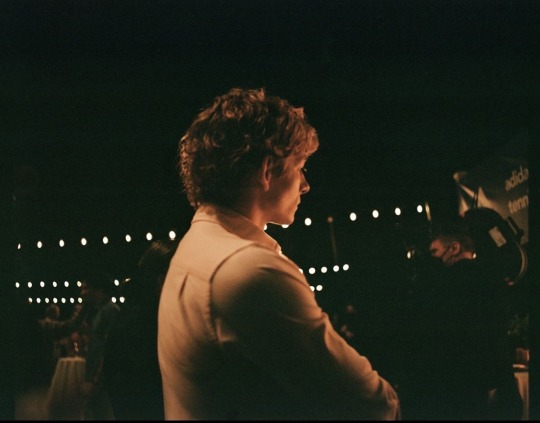




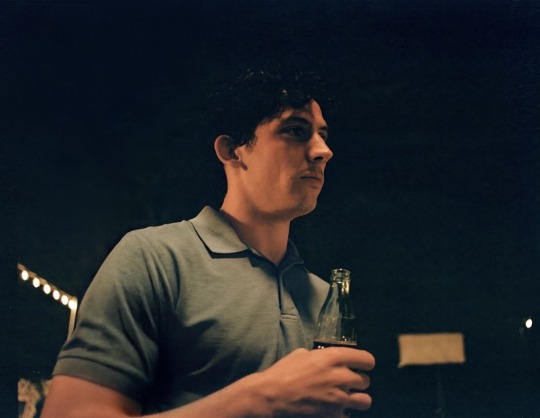






Art Donaldson
* ˚✧ / I Don’t Want to Know (Ft. Patrick)
* ˚✧ / Go Your Own Way
* ˚✧ / Never Going Back Again
* ˚✧ / Silver Springs
* ˚✧ / The Chain
Patrick Zweig
* ˚✧ / Dreams
* ˚✧ / I Don’t Want to Know (Ft. Art)
* ˚✧ / Oh Daddy
* ˚✧ / Second Hand News (Ft. Tashi)
Tashi Duncan
* ˚✧ / Don’t Stop
* ˚✧ / Gold Dust Woman
* ˚✧ / Second Hand News (Ft. Patrick)
* ˚✧ / Songbird
* ˚✧ / You Make Loving Fun
again, i need to give at least some credit to maya (love u pookie), because her challengers x brat release sparked something in me and really made me dive into making bots based on/inspired by songs/albums!! added silver springs because, come on, it’s a necessity even if it isn’t on the official original album (and because of diya; love u too pookie)
and genuinely, thank you all for the support and love. it means the world to me <3
tried to make their name color gradients based off of their shirts/dress (under the coat for tashi lol) from these photos (well from a different photo with these clothes) yet it didn't really turn out the way i wanted except for hers...
also i’m sorry that my art bots actually suck?? idk why the bot never replies with a proper response, but like i’ve said— the longer your response, it should reply with a longer, more proper one. anyway... please feel free to give feedback because trust ik these are not all that, soooooo
#c.ai#jclolz22#tashi duncan#challengers#character ai#c.ai creator#patrick zweig challengers#patrick zweig x you#patrick zweig x reader#patrick zweig#art donaldson x you#art donaldson#art donaldson x reader#challengers 2024#challengers movie#rumours#tashi duncan x you#tashi challengers#fleetwood mac#art donaldson x patrick zweig#tashi duncan bot#patrick zweig bot#art donaldson bot#tashi duncan x reader#artrick#challengers x reader#stevie nicks#dramaaaa
296 notes
·
View notes
Text
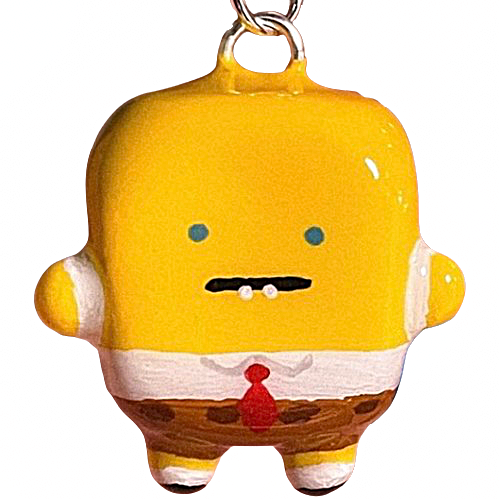

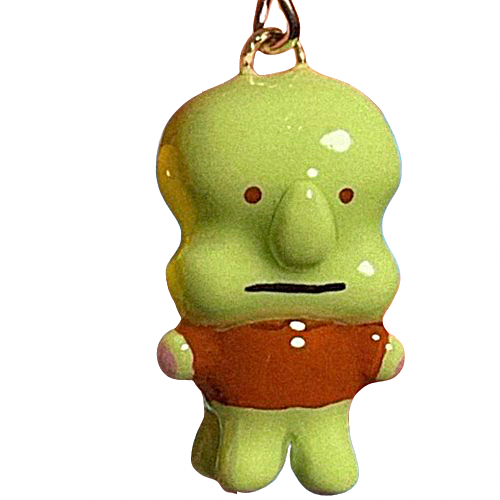

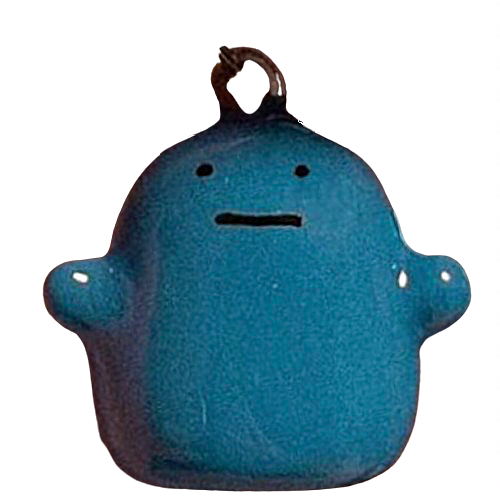


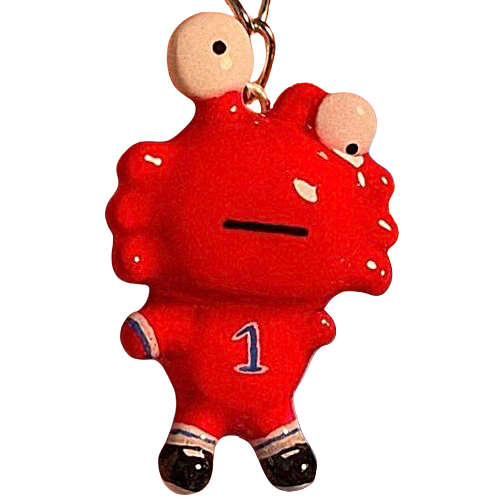

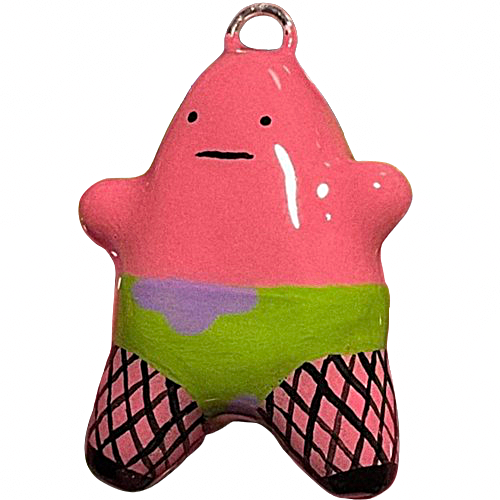


character keychains, part 2 by winterrkatt
#winterrkatt#katharine kow#transparent by me#keychains#objects#spongebob#patrick#squidward#foster's home for imaginary friends#mac fhfif#bloo fhfif#eduardo fhfif#coco fhfif#wilt fhfif#fishhook patrick#fishnet patrick#pikachu#ash ketchum#pokemon#charms#clay art#trinkets#transparent pngs#pngs
271 notes
·
View notes
Text
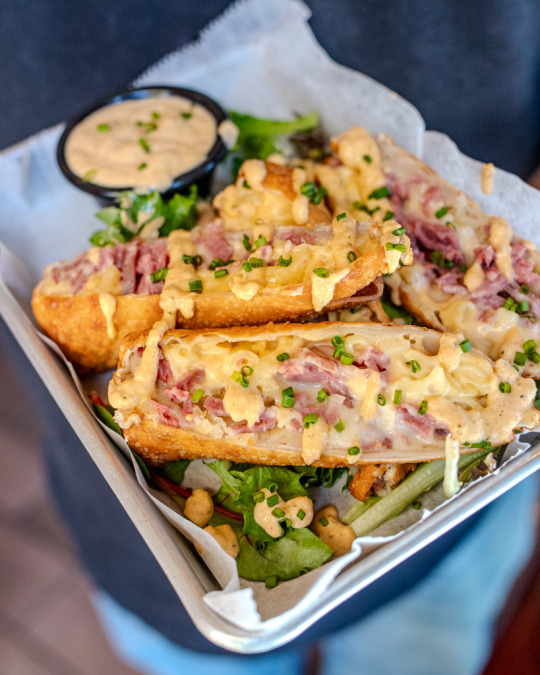
Reuben Mac & Cheese Egg Rolls | Boston Burger Company
#food#cooking#reuben#corned beef#mac and cheese#egg rolls#irish#st patricks day#uotd#whitefireprincess
153 notes
·
View notes
Text
also i found something crazy which looks like the tracks for patrick's live solo performance of sugar shown at the end of the "artist lesson" episode he recorded for garageband ??
apparently he did a lesson for sugar

and a lesson for i don't care

after some digging i found some blessed screen recordings of both (sugar, idc - if u want u can also dl them here!) (they are kinda slightly laggy/unsynced in some places, especially idc, idk if that's a quality of the original lesson or the recording lol)
im curious if those who have garageband.... can view/get these still ?? apparently they were ?? made free eventually for users ?
as a vehicle for tuition the format of the lessons seem a bit shite if im being honest BUT as a trove of really fucking cute patrick+music content it is overflowing with riches and delights and i cant believe it isn't all anyone ever talks about forever and ever /j
#its an ogg file which opens fine in audacity (smthin i had to learn the hard stupid way lol)#sorry for blabbing so much i was almost as excited abt this as i was about suitehearts#fall out boy#patrick stump#time capsule#spin for you#last night's stage#gblessons#alas not a single person i can bother has a mac and its not on ios versions apparently lol -_-#the i dont care one.. there is a crappy 30sec clip on ytube that was the only thing ive ever seen.. why isnt it clipped all over the place#am i ........ late to the party ?! is everyone alrdy over it and i missed it all ?!
91 notes
·
View notes
Text

March 2022, I showcased my work at an art gallery in downtown phoenix. Click here to see Neo- renaissance Portraits
176 notes
·
View notes
Text
Check out my human-made art!
Hello cousins!! This is a selection of some of my art and designs that can be purchased on anything you can think of (phone cases, clothing, home goods, stickers, etc.), in all price brackets. I specialize in Magical Realism, Psychedelia, and vintage-inspired designs. It's all made by me with no AI, and I would love to raise my profile so that people who would enjoy it get to see it, and also, sales good. Please share if you like what you see, and visit my RedBubble shop HERE , and ignore the watermarks ❤️






























#movies#tv#80s movies#silent film#buster keaton#patrick swayze#johnny castle#artists#artists on tumblr#black cat#halloween#cats#goth#witchy#drop dead fred#rik mayall#quint#jaws#robert shaw#pink cadillac#classic cars#magical realism#realism#portraits#fantasy#macaw#scarlet macaw#white horse#animals#mac and me
18 notes
·
View notes
Text
fr tho its always sunny in philidelphia and spongebob are the same show in different fonts
#mac and dennis move to the suburbs 🤝 that ep where spongebob and patrick adopt a scallop#this is so important to me#it’s always sunny in philadelphia#iasip#spongebob#mac mcdonald#dennis reynolds#dee reynolds#frank reynolds#charlie kelly#spongebob squarepants
104 notes
·
View notes
Text

is it hard
13 notes
·
View notes
Text

"Stevie Nicks is my hero."
(little Misty Day sketch! I love her sm, I'm so her she's so me. Anyways I hope you like it!🖤)
little reminder: don't be mean! I'm still learning. Any advice is more than welcome! thank you<3
#misty day#lily rabe#ahs coven#american horror story#ahs fandom#ahs murder house#tate langdon#kyle spencer#evan peters#violet harmon#james patrick march#taissa farmiga#kai anderson#stevie nicks#fleetwood mac#Spotify
38 notes
·
View notes
Text
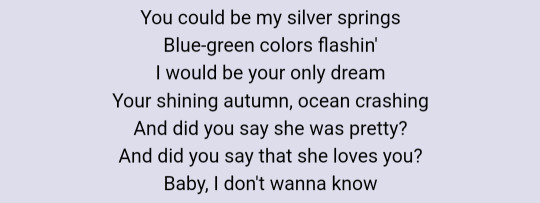





Fleetwood Mac, Silver Springs // Fall Out Boy, (Coffee's For Closers)
#idk. folie as a breakup album. that one fleetwood mac performance that everyone talks about where the onstage tension#is palpable? that's coffee's. patrick spitting back pete's sweet words about the band at him the same way stevie sang her own#does that make sense???#she speaks!#ww#lyric comps#fall out boy#folie a deux#fleetwood mac
51 notes
·
View notes
Text
More of the offensive main trio as textposts bc I hate them










#the offensive#the offensive podcast#jess tate#patrick nolan#woody woodall#chris woody woodall#i can still barely remember like half of the characters names even tho im literally on ep 96#i know alex and kieran and chris and kfc and theo and dwight and eric (rip my cray cray king) and mac and now im drawjng a blank#omg and dan how could i forget u#im giggling at the first pic bc it looks like woody has that as his pfp
9 notes
·
View notes
Text
'three tickets to challengers'
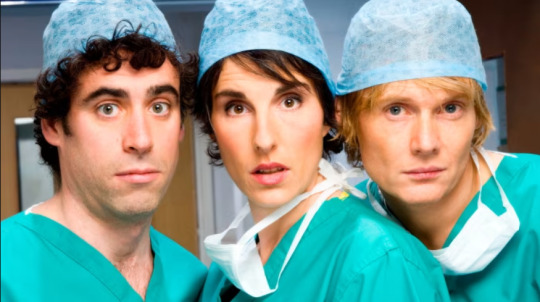
#green wing#there's a scenes of art and patrick and i was like 'omg its guy and mac'#caroline as tashi but shes constantly fumbling#challengers is actually green wing fanfiction
13 notes
·
View notes
Note
PATRICK FINGERING PETE ON HIS LAP IN A SPANKING POSITION AND PETE IS JUST MOANING AND MOANING BOY IS JUST GOING CRAZY YK idk I just think that would be hot it's 2am I'm tired and horny and need sleep

YOU ARE RIGHT AND should say it 🤝
#peterick#Pete#Patrick#bottom Pete#top Patrick#sub Pete#i wanted to add sound effects but idk what they should say lol#wap#Mac and cheese#art#Request
26 notes
·
View notes
Text
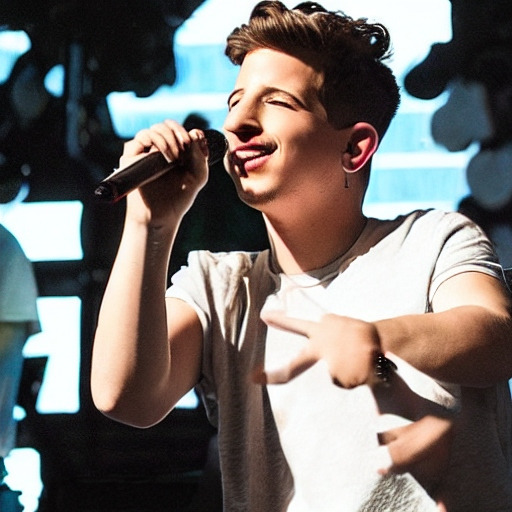
#taylor swift#bruno mars#dogs of tumblr#cats of tumblr#hockey#football#patrick mahomes#food pics#mac n cheese#gordon ramsey#autumn#autumn aesthetic#golf#golf equipment#golf course#this blog is specifically designed to fuck over ai
13 notes
·
View notes
Text
Book of Aicill
The Book of Aicill relates to the criminal law and is often discussed as being on par in significance with the Senchus Mór; although, the latter deals with civil law. Like the mystery of Saint Patrick’s posthumous authorship of the Senchus Mór, the Book of Aicill attributes its authorship to that of the legendary Cormac Mac Airt who is supposed to have ruled as High-King of Ireland during the 3rd…

View On WordPress
#Book of Aicill#Brehon Law#Ceannfalad#Cormac Mac Airt#Crime and Punishment#Criminal#Dublin#Manuscripts#Senchus Mór#St Patrick#Trinity College
7 notes
·
View notes
Text
Easter Rising
Easter Rising is one of the most well-known Irish rebellions. It caught the British by surprise (despite the Castle knowing all there was to know about the planned uprising) and lasted for five days before being defeated by the British Army. The Rising was concentrated in Dublin, with only a few countryside engagements. While the rebellion itself was a failure, the execution of its leaders and the determination of its survivors, turned it into a spiritual and political victory that set the stage for the Irish War of Independence and the Irish Civil War.
And it nearly didn’t happen.
Daniel O’Connell and the Young Irelanders
To understand why the Rising occurred, one most first familiarize themselves with Ireland’s long struggle against British colonialism.
In 1798, the United Irishmen coordinated a massive rebellion in Ireland that would clear the path for a Napoleonic French invasion. They would help the French overthrow the British Empire and earn their freedom. The rebellion was brutally suppressed by the British forces and served, in the British and Protestant Irish minds as a nightmarish example of what the Catholic Irish were “capable” of.
This rebellion was followed by another rebellion in 1803, led by Robert Emmet. He also coordinated with the French, but was forced to move the date of his rebellion up, jeopardizing any support he has previously organized. He issued a proclamation of the Provisional Government and expected the people to rise. It only lasted for a day before it was defeated by the British. Emmet was executed by the British.
After the failed rebellions, a modicum of progress was achieved in the 1820s/1830s when one of Ireland’s greatest statesmen, Daniel O’Connell campaigned for Catholic Emancipation i.e. the right for Catholics to sit in Parliament. This was granted in 1829.

Daniel O'Connell
O’Connell tried to repeal the Act of Union and asked that Ireland be allowed to govern itself independently while acknowledging the Queen as the Queen of Ireland as well as of England. However, O’Connell’s failing health and his refusal to do anything that would lead to bloodshed weakened his support and the repeal fell apart after he died.
Out of the ashes of O’Connell’s attempt to repeal the Union, rose the Young Ireland Movement. This group led the Young Irelander Rebellion of 1848, which was defeated by the British. Many of the organizers were shipped off to prisons all over the British Empire, including Australia. One Young Irelander, Thomas Meagher migrated to America in time to volunteer for the Union Army’s Irish Brigade when the American Civil War broke out,
Another Young Irelander, James Stephens created the Irish Republican Brotherhood (IRB), a secret organization that would be responsible for Easter Rising and fill the ranks of the IRA.
Charles Parnell and Home Rule
Although O’Connell failed to repeal the Union, he paved the way for greater independence in Ireland. He proved that the British could be engaged through their own parliamentary government and that more could be achieved through negotiations than through violence. Charles Parnell took these lessons to heart and used his own position within England’s parliament to push for Home Rule.
Parnell was a politically astute Irishmen, associating with well-known nationalist organizations such as the IRB, while also using parliamentary procedures such as obstructionism to drew England’s attention to Irish issues. Parnell was able to capitalize on Irish resentment over land ownership and landlords to increase his party’s power within parliament, leading to his arrest.
While in prison he made a deal with Gladstone’s government, promising to quell violent agitation if Gladstone allowed renters to appeal for fair rent before a court. This, combined with the backlash following the Phoenix Park killings, broke the IRB’s power until the early 1900s. Parnell used his power to reintroduce Home Rule which combined a request for independent rule with agrarian reform. He also won the support of the Catholic Church. He reshaped his party, renamed it the Irish Parliamentary Party, and introduced a new sense of professionalism into its members. Other British parties would base their organization on Parnell’s tightly run party. He also helped passed several Land Acts that abolished the large Anglo-Irish tenant owned estates.
Just when Parnell was at his highest point of power and Home Rule seemed destined to become reality, a personal scandal ruined his political career. It turns out that Parnell was involved in an affair with a currently married woman. The Catholic Church, who had grown to distrust Parnell, used this to break his political power and even Gladstone turned his back on him. Parnell was defiant, splitting his party into the Parnellites and anti-Parnellites. John Redmond, another important Irish statesman, was a Parnellite. Parnell died shortly after, taking Home Rule with him.
John Redmond
After adjusting to the social change demanded by Daniel O’Connell in the 1820s/1830s and the trauma of Parnell’s scandalous fall from grace, Ireland’s future seemed bright. The mystical and ever elusive Home Rule seemed to be within the grasp of John Redmond, Parnell’s political and spiritual successor.

John Redmond
This bill promised a bicameral Irish Parliament to be set up in Dublin, the abolition of Dublin Castle (the center and reviled symbol of hated British colonialism and authority within Ireland), and a distinctive Irish representation in the Parliament of the U.K. This bill passed the House of Commons three times and was defeated in the House of Lords three times and was postponed indefinitely when WWI broke out.
While Home Rule’s fate was up in the air, Ireland itself was undergoing a social transformation. R. F. Foster’s book Vivid Faces does a fantastic job capturing the social experiences of the members of Irish Volunteers and IRA that I cannot recapture in this short post. However, it is sufficient to say that the members that crowded the language revival leagues and sports leagues wanted more than Home Rule. They wanted a revitalized and progressive Gaelic culture and identity.
The Irish, mostly Protestant, in, what is now, Northern Ireland were alarmed by the very idea of Home Rule and this renewed interest in Gaelic culture. They responded by creating the militaristic organization called the Ulster Volunteers in 1912. Their goal was to pressure the British government to nix Home Rule and to defend themselves from the Catholic “onslaught” should Home Rule pass into law.
The Irish nationalists in the rest of the Ireland responded by creating their own military organization: the Irish Volunteers in 1913. It was created by Eoin MacNeill and included members from the Gaelic League, Sinn Fein, and the Irish Republic Brotherhood.

Eoin MacNeill
The Irish Republican Brotherhood (IRB) was a secret organization dedicated to Irish independence. Bulmer Hobson (who co-founded the Fianna Eireann with Constance Markievicz) combined the two organizations into the Irish Volunteers.
Redmond knew about the Irish people’s frustration. He promised the English that he would rally the Irish about the British cause and enlist in its armies if England promised to pass Home Rule. During a speech, Redmond-eager to prove that he was a man of his word-passionately encouraged Irish to enlist in the army and fight in France. This was the final straw for many nationalists and Redmond lost what little power he had over events. Redmond would try to regain control by co-opting the Irish Volunteers with assistance from Bulmer Hobson, but this only angered the nationalists. Tom Clarke, who was great friends with Hobson, considered it an act of treason and never spoke to his friend again.
Irish Volunteers and the IRB
The Irish Volunteers were never completely united and the battle for Home Rule drove a split within the organization between those who trusted Redmond and those who decided that Home Rule wasn’t enough anymore and that a bloody uprising was needed. Of the men who wanted to wait, Eoin MacNeill and Bulmer Hobson are the most famous. They believed that it was better to wait for British provocation before leading the people to the slaughter. They were also doubtful of their chances of success and did not believe in the glorious sacrifices that Patrick Pearse exalted in his speeches and writing.
The more militant group kept the name Irish Volunteers, even though many of them were also IRB members, and consisted of men such as Patrick Pearse, Tom Clarke, Seán Mac Diarmada, Joseph Plunkett, and Eamonn Ceannt. They believed that England’s difficulties meant Irish opportunity and they wanted to enlist German help in pulling off an uprising. These men were idealistic and, perhaps a bit naïve, but they were dedicated to their cause and to their country.
This committee knew they would not be able to win without arms and support, so, keeping their plans to themselves, they sent Roger Casement and Plunkett to Germany to present their plans for a German invasion that would coincide with an Irish rising. The Germans rejected this plan (maybe remembering what happened in 1798, when the French made a similar landing, weeks after a massive Irish uprising), but promised to send arms. Plunkett returned to Ireland while Casement remained in Germany to recruit Irish prisoners of war to the Volunteer’s cause.
The situation in Ireland, specifically Dublin, became even more complicated when James Connelly, head of the Irish Citizen Army-a group of socialist trade unionists-threatened to start his own uprising.

Bulmer Hobson
A meeting between Connelly and Pearse occurred and Connelly joined the military committee. Thomas MacDonagh joined shortly after, becoming the seventh and last member of the committee.
The Irish Volunteers were often seen drilling and practicing for some vague rebellion, so it wasn’t suspicious to the authorities or to MacNeil and Hobson to see units marching around. When Pearse issued orders for parade practice on Easter Sunday, MacNeil and Hobson took it at face value while those in the know, knew what it really meant. This surreal arrangement would not last for long and the committee’s secrecy nearly destroyed the very rising it was trying to inspire.
Seven Members of the Military Committee
Not only were the members of the committee the men most responsible for the rising, they were also the signatories to the Irish Republic Proclamation. This important document was the foundation for the IRA’s fight for freedom and was the death warrant for all who signed it. Below are short biographies on the seven members.

Patrick Pearse
Patrick Pearse was a school teacher and poet. He was a firm believer in reviving the Gaelic language and founded St. Enda’s College as a bilingual institution, focusing on Irish tradition and culture. Pearse is the man who represents the Rising best as he truly believed that the blood of martyrs would liberate Ireland. He was the spiritual leader of the rising and one of its most powerful martyrs.

Tom Clarke
Tom Clarke was an old hat at rebellions. He was a firm believer in violent uprisings and spent fifteen years in an English prison before joining the committee. He had joined the IRB in 1878 and was arrested for attempting to blow up London Bridge as part of the Fenian dynamite campaign in 1883. He was only released because of public pressure in Ireland and an endorsement from John Redmond, himself. Following his feud with Hobson over Redmond’s acceptance into the Irish Volunteers, Clarke became firm friends with Seán Mac Diarmada. Together they ran the IRB and helped plan Easter Rising.
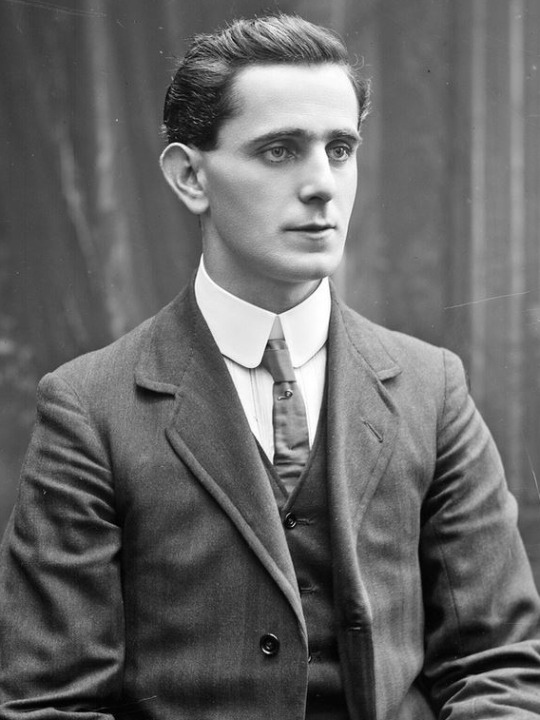
Seán Mac Diarmada
Seán Mac Diarmada (also known as Sean MacDermott) was born in Corranmore, where he was surrounded by Irish history and reminders of British oppression. By the time he moved to Dublin in 1908, he was already a member of the IRB, Sinn Fein, the Gaelic League, and the Ancient Order of Hibernians. He was also manager of the newspaper Irish Freedom which he founded with Hobson and Denis McCullough. He became close to Clarke and helped run the IRB. He was arrested briefly in 1914 for a speech against joining the British army but was released in 1915. Like Pearse, Mac Diarmada believed in the power of a bloody sacrifice and, besides Clarke, was the man most responsible for planning the rising.

Thomas MacDonagh
Thomas MacDonagh was assistant headmaster at St. Enda’s School and lecturer at University College Dublin. He was also a playwright and poet. He met Pearse and MacNeill through the Gaelic League and joined the IRB in 1915. He married Muriel Gifford whose sister, Grace, would marry Joseph Plunkett. He was also responsible in planning the funeral of Irish Fenian leader Jeremiah O’Donovan Rossa where Pearse would give one of his greatest speeches.

Joseph Plunkett
Joseph Plunkett came from a wealthy Dublin family. He contracted tuberculosis when he was young and spent considerable time in the Mediterranean and North Africa. When he returned, he joined the Gaelic League where he befriended MacDonagh. He joined the IRB in 1915 and was sent to German with Casement to negotiate for arms and military support.

Eamonn Ceannt
Eamonn Ceannt was a very religious and committed member of the Irish Volunteers. Like most Volunteers, he joined the Gaelic League when he moved to Dublin and became involved in nationalistic affairs after meeting Pearse and MacNeill. In 1907 he joined Sinn Fein and in 1915 he became a member of the IRB.

James Connolly
James Connolly was born in the Irish slums of Edinburgh and joined the British Army when he was fourteen. While serving in the army, he was involved in the Land Wars, sparking an interest in land issues and a deep hatred of the British. He deserted and became involved in the socialist movement in Scotland. He moved to Dublin when he heard that the Dublin Socialist Club was looking for a secretary and quickly transformed it into the Irish Socialist Republican Party. He, along with Arthur Griffith, protested the Boer War and he wrote a book about labor in Irish history that was very critical of Daniel O’Connell. In 1913, he co-founded the Irish Citizen Army with Jim Larkin, whose aim was to defend workers and strikers from the police. Connolly was initially disgusted with the Irish Volunteers, believing that they were too bourgeoise and didn’t have the guts to rebel against the British. It was only after meeting with Pearse and Clarke did he change his mind and support the Volunteers and the Rising.
Easter Rising Sunday
Easter Rising was a surprise for the British and for the leaders of the Irish Volunteers-Eoin MacNeill and Bulmer Hobson. Historian, Charles Townshend argues that Hobson and MacNeil were subsequently written out of Irish history because of their resistance to any violent rebellion in 1916 and it is only recently that they’ve returned to their proper place in history. While it is true that they were hesitant to lead a general uprising, it was for good reasons. The Irish Volunteers weren’t soldiers, despite all their training, and they didn’t have the weapons needed to fight a protracted rebellion. Additionally, it was doubtful that the general population would support their efforts. These concerns combined, made the Rising’s chances for success minimal.
This didn’t dissuade men like Pearse and Clarke, who planned the Rising right under MacNeill’s noses. To ensure full support of their efforts, the seven leaders of the Rising had the ‘Castle Document’ read during a meeting. This document was a plan to arrest the leaders of the Irish Volunteers should the English implement conscription. While it was a real document, it seems that the leaders may have played fast and loose with when it was going to be implemented. Either way, this was the type of repressive efforts that MacNeil believed were needed to ensure the people would support a rising of any kind. MacNeil gave orders to the men to resist and the seven leaders decided amongst themselves that the Rising would take place on 23rd April 1916. They didn’t tell anyone else though and wouldn’t until the last minute.
Then things began to unravel.
First, Roger Casement was arrested. Roger Casement had gone to Germany to recruit arms and assistance from the German government and to recruit Irishmen from the captured British soldiers. The Germans were less than supportive, and it seems Casement boarded the ship Aud to return to Ireland to either stop or postpone the rising. However, when he arrived in Ireland on either April 21st or 22nd, he was pick up by British police and placed in jail.
Then MacNeil and Hobson had their worst suspicions confirmed-Pearse and his comrades were secretly planning a rebellion without their support. There was a confrontation between MacNeil and Pearse on the 21st and MacNeil vowed to do everything possible-save warning the authorities-to stop the rebellion. However, the next day MacNeil was informed that the Germans had sent a boat full of supplies to Ireland. This seemed to convince him that things were firmly out of his control and he remained mostly mute about his feelings regarding the Rising. His opinions changed again when found out that Casement had been arrested and the arms had been picked up by the British. Feeling that this ruined what little chance the rebellion had to succeed, he spoke to Pearse once more. One can only imagine his disorientation when he found out that Hobson had been arrested by the IRB Leinster Executive out of fear that he would try to stop the rebellion. Why Pearse and his comrades never arrested MacNeil is unknown, but it speaks volumes about which man they were more threatened by.
Failing to convince Pearse that it was necessary to cancel the rebellion to avoid disaster, MacNeil wrote a counter-order, canceling the drills scheduled for Sunday. This counter-order took an already confused situation and turned it into a bewildering disaster. Units formed as ordered by Pearse and dispersed with great puzzlement and some anger and frustration. Pearse and his comrades met to discuss their next steps and decided the die had been cast. There was no other choice except to try again tomorrow, Monday, 24th, April 1916.
As can be imagined, the counter-orders have been a source of much anguish and gnashing of teeth. From the rebellion’s perceptive, it did more to ruin the Rising then the British. There is some belief that if the rebellion had occurred on Sunday as planned, with all the Irish Volunteers mobilizing, then it may have been successful. Some of this is definitely wishful thinking, as the plan for the rebellion was far from perfect to begin with. Have a larger showing of Irish Volunteers may have only meant more Irish dead at the end of the five days.
The more important question how did the decision by Pearse and his comrades to form a shadow chain of command within the Irish Volunteers affect operations? MacNeil would not have needed to issue the counter-orders if he had been in on the planning to begin with and there would have been no confusion on part of the Volunteers if commands were issued as they should have been. While it is true that Hobson and MacNeil did not want to rebel until conditions were more favorable for the Volunteers, the Rising leader’s decision to split their command in half was far more detrimental to their rebellion than anything else.
Easter Rising Monday
When the Rising began that Monday, only about half of the Irish Volunteers showed up in several key locations in Dublin and even fewer gathered in the countryside. Pearse and the others lead about 150 men down Sackville Street (now O’Connell Street) where they picked up stranglers and marched on the General Post Office (GPO). It was here they would establish their headquarters.

The General Post Office
The GPO was a formidable building and important location in Dublin, but there is some question as to whether it offered Pearse and Connolly the ability to effectively communicate with the other garrisons, especially when it was cut off from the southern half by the Castle and Trinity College.
Whatever its military significance, it became a politically powerful building. After they took the GPO, two Irish flags were hung-one was yellow, green, and orange/yellow and the other was green with a golden harp. Then Pearse read outloud the Irish Proclamation of the Republic to the newly ‘liberated’ people. This proclamation was signed by all seven leaders of the Rising-Pearse, Clarke, Ceannt, Mac Diarmada, MacDonagh, Connolly, and Plunkett-and it would later serve as their death warrant.
Whether because he read the proclamation or simply during the stress of the times, Pearse became the unofficial president and general of the Volunteers-although there were claims following the Rising that Clarke was the actual president. Additionally, the name Irish Republican Army (IRA) came out of this makeshift government. They wanted an official name for their army. It originally started as the Army of the Republic, which was changed to the IRA and became official and everlasting in the 1920s.
There was a sense of futility combined with military spirit in the GPO. While men like Pearse had always spoke of the need to wash Ireland in martyr’s blood, even practical men like Connolly seemed to believe that they were going to be slaughter. Yet, Pearse and the other leaders still struggled to develop a military command structure and government while also taking the city. As Pearse became the center of the Rising, Connolly took command of the military forces, sending out orders that his secretary, Winifred Carney, wrote on her typewriter.
While this was happening, the battalions that showed up, quickly dispersed to vital positions throughout the city.
To the east of the GPO, was the Four Courts-the Supreme Court, the Court of Appeal, the High Court, and the Dublin District Court. This was taken by the 1st battalion commanded by Edward Daly.

Edward Daly
Daly was the youngest man to serve as commandant and was Tom Clarke’s brother-in-law. Daly sent a small company under the command of Sean Heuston to take the Mendicity Institution (one of Ireland’s oldest charities). Heuston’s original orders (when GPO expected an immediate response from the British Army) were to hold the position for a few hours to give GPO time to get organized. Heuston would hold on for three days.
Southeast of the Four Courts was the South Dublin Union. This was taken by the Fourth battalion led by Eamon Ceannt, one of the seven signers of the proclamation and planners of the rising.
West of the South Dublin Union was Jacob’s biscuit factory. This was taken by the second battalion commanded by Thomas MacDonaugh, another signer of the proclamation.
West of the biscuit factory was St. Stephen’s Green, a large park. This was taken by Connolly’s Citizen Army commanded by Michael Mallin.

Michael Mallin
Mallin was Connolly’s second in command co-founder of the Socialist Party of Ireland. Constance Markievicz, a fascinating and colorful member of the Volunteers, Citizen Army, and, later, IRA, was his third in command. They tried to take Shelbourne Hotel on the north-east side of the park, but didn’t have the sufficient manpower. The British would position troops in the hotel by Monday night.
Northeast of St. Stephen’s Green was Boland’s Mill. This was taken by the Third battalion, commanded by Eamon de Valera. De Valera was a mathematics professor and had joined the Irish Volunteers out of a sense of nationalism, but only reluctantly became an IRB member. He would later distance himself from the IRB, professing a disdain for secret societies.
While the rebels certainly took a large part of the city, Dublin was surrounded by five police barracks. To the northeast there were the Royal and Marlborough barracks, to the southwest there was the Richard Barracks, to the very south was the Portobello barracks, and to the southeast was the Beggars Bush Barracks.
Additionally, the Castle, the center of British colonialism in Ireland was in the very center of Dublin, and the Volunteers didn’t take it. There was a futile attempt early Monday afternoon, but for reasons that are still unclear, it wasn’t successfully. The Volunteers also failed to take Trinity College and the telephone exchange in Crown alley, allowing the government to control communication and repair the lines that had been cut. Additionally, they failed to take Dublin’s two railways or Dublin Port and Kingstown. This would, later, enable the British to bring in army reinforcements.
There has been a lot of puzzlement over these failures, but it may have simply between due to the lack of manpower and the confusion caused by the counter-orders. There were mild gunfights throughout the day and the Volunteers waited nervously for Britain’s response. They expected it to be hard and fast, but this was furthest from the truth.
That Monday morning there were a total of 400 British soldiers on hand to respond to the rebellion. Historian Charles Townshend claims that there were 100 for each of the four barracks (Richmond, Marlborough, Royal, and Portobello). Despite knowing about the preparation for the Rising and the arms the Germans had sent, the British officials didn’t expect anything to happen that day.
The small force that engaged the rebels during Monday afternoon, were unable to displace the Volunteers. This was a short-lived victory for the rebels however, as by Monday night General Lowe had taken command along with an additional 150 troops from Belfast, and a colonel brought up the artillery from Athlone. He could expect more reinforcements from England the next day. Lowe’s plan was to establish communication along the Kingsbridge-North Wall-Trinity College line, cutting the city in half, and isolating the rebel forces from each other.
Martial law was declared, leaving Dublin’s fate in the military’s hands.
Tuesday, 25 April
By Tuesday morning, historian Charles Townshend estimates that the British military strength was up to 3000 men and Lowe estimated the rebels to be about 2000 strong, but he knew little else. He feared that the rebellion could spread to the countryside and so he requested additional reinforcements.
Despite not knowing the exact situation, Lowe’s men were able to achieve a few victories. By the end of Tuesday, they had dislodged Mallin’s men from St. Stephen’s Green and into the Royal College of Surgeons. A unit attempted to repair a section of the damaged railroad at Amiens Street but were attacked by the rebels positioned along Annesley Bridge. They fought for two hours before the British were forced to retreat.
That night, the British were able to position the four 18 pounder field guns and the guns on the HMS Helga. The British would use the artillery to great effect on Wednesday, focusing their fire on Liberty Hall, O’Connell Street, and Boland’s Mill. Connolly had once said that Britain would never fire artillery at Dublin because it was a modernized capitalistic city. One wonders what Connolly’s thoughts were during the intense bombardment.
Francis Sheehy-Skeffington
Tuesday was a day of small engagements while General Lowe assessed the situation, but that didn’t mean it wasn’t a day of tragedy. The shock of the rebellion shattered the complacency that had taken over the Irish government. With a crisis on their hands, the military responded swiftly and harshly. An example of the kind of repression the military would use during the rest of was week was the arrest of a pacifist, feminist (he had adopted his wife’s name) and prominent Irish social figure-Francis Sheehy-Skeffington.

Francis Sheehy-Skeffington
Sheehy-Skeffington was vehemently against the militarism that had taken over the Irish Volunteers and was out Tuesday trying to discourage looters. He was arrested by British Lieutenant Morris and taken to Portobello Barracks. Later that night Captain J.C. Bowen Colthurst wanted to go lead a raiding party up to Harcourt Rd. (south of St. Stephen’s Green) and he took Sheehy-Skeffington as a ‘hostage’. On the way there, he killed a young man named Coade before ransacking a house owned by the alderman Tom Kelly. He arrested two men, Thomas Dickson and Patrick McIntyre, and took them back to the barracks. He reviewed the papers he found at the alderman’s house and the papers on Sheehy-Skeffington. Wednesday morning, he took the three men out to the yard and shot them, claiming they were dangerous men and he shot them to prevent the men from escaping.
The commander of Portobello Barracks, Francis Vane, was not there during the shooting. When he found out, he demanded Colthurst’s arrest. Instead, the bodies were buried in the yard, Hanna Sheehy-Skeffington was not told about her husband’s death, and Colthurst broke into her house to find evidence that Francis Sheehy-Skeffington had helped planned the revolution. Hanna eventually found out what happened to her husband. Vane pressed to prosecute Colthurst and Vane lost his command while Colthurst kept his rank.
Colthurst was finally arrested May 9th and would later be court-martialed and convicted of insanity. He was sentenced to Broadmoor Hospital, but was released in 1918 and resettled in Canada. Vane was dishonorably discharged from the army and went on to become involved with the Boy Scouts.
Wednesday, 26 April
During Wednesday, the British tightened their grip on the city. Using their artillery to bombard positions such as O’Connell Street and Boland’s Mill, Lowe sent his new reinforcements from England into the city to further cut the rebels off from each other.
One unit was sent to attack Heuston’s position at Mendicity Institute. With only 26 Volunteers against hundreds of British soldiers, Heuston held until the British were so close, they could throw grenades into the building. His troops were the first rebels to surrender.
The Sherwood Foresters, a unit that had arrived from Britain, were sent down Grand Canal Street, near Beggar’s Bush Barracks. They were held up where Grand Canal meets Mount Street by heavy rebel fire. The Volunteers had fortified various positions along the street, meaning that the Foresters were caught in their cross-fire as they repeatedly tried to take this position. After five hours of fighting and losing 240 men wounded and killed, they defeated the rebels and took the position, but many historians have wondered why they didn’t try another path into Dublin.
Thursday 27th, and Friday 28th April
Thursday and Friday were some of the bloodiest days during the Rising. One of the greatest battles in the countryside, the Battle of Ashbourne, in which the Fingal Battalion defeated a RIC detachment took place on Friday. Within Dublin, the famous battle for the South Dublin Union occurred on Thursday and the battle for the Four Courts waged during Thursday and Friday. Friday also saw the arrival of Commander-in-chief General Sir John Maxwell, who, perhaps, did more to ensure the spiritual and political success of the Rising than anyone else.
South Dublin Union

Cathal Brugha
Eamon Ceannt and his Vice-Commandant Cathal Brugha led the men at South Dublin Union. After a furious fight on Monday, their front had been mysteriously silent. On Thursday morning, reinforcements from Kingstown port arrived and attacked. The fighting here was vicious and Brugha, who insisted on fighting in the front line, was wounded twenty-five times and had to be sent to the medical staff on Friday. Still, they held throughout the week and even thought they had destroyed the entire British force that had attacked them.
Four Courts
The most famous fight of the Rising occurred in the Four Courts. This position was vital for the rebels as it protected headquarters and was near the center of town. The Volunteers were commanded by Edward Daly. On Wednesday, he sent troops out to take Linenhall Barracks, but didn’t have the men, so they set it on fire. The fire raged for most of the night. Meanwhile the British had taken Capel street, which meant Daly was now cut off from the GPO.
The British attacked Thursday morning. Men in armed trucks rolled down Bolton street and attempted to throw a cordon on King Street. However, the rebels had heavily fortified King street, and every inch was fiercely fought over. Eventually, the British had to drill through the inside walls and travel from house to house, wounding and killing many civilians. Daly had to pull his men back to the Four Court proper on Friday night. They were exhausted, but had fought long and hard.
General John Maxwell
General John Maxwell arrive in Ireland from London on Friday. His arrival signaled that London was no longer going to be nice and understanding with their “difficult Irish citizens”. He was a traditional army man, had served in Sudan, the Boer War, and the First World War. He was to be the formal commander-in-chief for Ireland, eclipsing the civil government that had been put in place, and he, more than anyway, helped create the rebel’s legacies. His first major contribution was to refuse any negotiations short of unconditional surrender. This was to have an important effect on the now tired, starving, and rattled rebels.
The artillery barrage had kept up since Wednesday and, despite their leader’s optimism, many commanders were beginning to doubt if they could last much longer. Then the fires started. It seemed that a shell had started a fire on Sackville Street, setting it ablaze. It spread around the GPO until the men inside could feel the heat through the walls. Then an oil works on Abbey Street caught fire. Friday morning, the women were sent out of the GPO. The building was hit by shells and it caught fire around 3 pm. Things were growing desperate. Connolly, who had spent all week checking posts and men, had been wounded in his left arm and leg on Thursday and had to be carried out on a stretcher. Fire had reached the GPO roof and many of the Volunteers had been cut off from HQ, left to defend themselves in their ever-shrinking fortified positions. An Irish Volunteer, O’Rahilly, who had passed out MacNeill’s counter-order, led a bayonet charge against the British troops and was mortally wounded.
Pearse decided to surrender.
Easter Rising Executions
The order was sent to all the units in Dublin and the few who had risen in the countryside, like the Fingal, Wexford, and Galway Battalions. Most of the troops did as they were told, and they were put in temporary holding cells until the British government could figure out what to do with them.
The British government’s goal was to squash all rebellion within Ireland, thus Maxwell ordered that all Sinn Feiners be arrested. Given the number of people arrested and the severity of the crisis, it was decided that the rebels would be tried by military court. It was decided that the men would be executed, but they could not handle the disgrace of executing the women.
The first three leaders to be executed were Patrick Pearse, Tom Clarke, and Thomas MacDonaugh. They were taken out of Richmond Barracks to Kilmainham gaol and shot on May 3rd.
Edward Daly, Willie Pearse (Patricks’ younger brother), Joseph Plunkett (who was allowed to marry his fiancée the night before), and Michael O’Hanrahan were executed on the 4th.
John MacBride was executed on the 5th.
Eamon Ceannt, Sean Heuston, Con Colbert, and Michael Mallin were executed on the 8th and Thomas Kent on the 9th.
Sean MacDermott and James Connolly were executed on the 13th. Connolly, still recovering from his wounds, was tied to a chair so the soldiers could shoot him.
The government in London had become alarmed with the executions by the 4th, but allowed them to carry on until it became clear that public opinion was decidedly against them. John Redmond pleaded for clemency and the Irish public, who had been detached from the rebels at best, were beginning to praise them. It seems that the fact the Rising lasted for so long combined with the civilians who had been murdered (like Sheehy-Skeffington) and swiftness of the executions turned the public against the British forces and towards the rebels.
Given this startling development, the British government decided to intern the remaining rebbels at various prisons and internment camps in England and Wales such as Frongoch, the “University of Revolution’.
The last Irish Volunteer to be executed was Roger Casement. He was tried for treason and was hanged on August 3rd.
Legacy
“That the authorities allowed a body of lawless and riotous men to be drilled and armed and to provide themselves with an arsenal of weapons and explosives was one of the most amazing things that could happen in any civilized country outside of Mexico.”-William Martin Murphy, statement to Royal Commission 1916
It is true that the Irish Volunteers lasted longer than anyone expected (maybe even longer then their own leaders expected), yet that alone cannot count as a victory. Despite their best efforts, the plans for the Rising were muddled and the secret nature of their work only hurt their cause. It tore their movement in two, creating a political vacuum that allowed the IRB to take control, but also created a legacy of distrust. There would always be those members who suspected the IRB and this suspicion that would continue into the Irish War of Independence and contribute to the Irish Civil War and the aftermath of the 1924 Army Mutiny.
Once the Rising started, the battalions quickly became isolated commands of their own, their connection to the GPO and the leadership fragile. There were several brave stands during the Rising, such as Heuston’s stand at the Medicity Institute, Ceannt’s stand at the Four Courts, and the Battle of Ashbourne in the countryside and no one can deny the courage or dedication of the men who rebelled.
However, it is also hard to deny the tragedy of the entire affair. It has been estimated that a total of 485 people had been killed and 2,600 had been wounded during the rebellion. Ireland lost many important men and women such as Francis Sheehy-keffington, Michael Joseph O’Rahilly (the O’Rahilly) and promising leaders such as Sean Heuston and Edward Daly. Dublin city had been bombarded, burnt, and filled with lead and the Rising pushed the English to establish a military governor, John Maxwell.
So, it was a disaster?
It may have been nothing more than another failed uprising had it not been for the brutal murder of men like Sheehy-Skeffington and the executions. One cannot completely fault John Maxwell. Governments and military men often fall into the trap of believing that a rebellion cannot survive without its leadership. The British never expected the survivors to pick up the torch light by the signers of the Irish Proclamation.
De Valera was scheduled to be executed, but was spared because of the change in public opinion. Michael Collins had originally been marked for harsher punishment (such as execution) but was saved because he thought he heard someone call his name and moved to the group marked for lighter punishment in an attempt to identify the voice. Once he joined that group, he just stayed there. These two men would be instrumental in shaping the Irish War of Independence and modern Ireland.
Additionally, men and women like Cathal Brugha, Richard Mulcahy, W. T. Cosgrave, Arthur Griffith, Constance Markievicz, Harry Boland, and many more all participated in Easter Rising, many were interned in prisons like Frongloch internment camp, and would later become vital to the IRA in one capacity or another.
Easter Rising provided these future leaders of Ireland a glimpse into what worked and what didn’t. Michael Collins, himself, was disgusted with the loss of life and Richard Mulcahy, the IRA’s future chief of staff, experienced guerrilla warfare for the first time during the Battle of Ashbourne. De Valera’s experience in Dartmoor prison gave him the reputation and confidence he needed to become President of the Dail. It also created a moment of everlasting brotherhood that created the esprit de corps needed to survive the Irish War of Independence War and the very same brotherhood that would tear Ireland apart during the civil war.
The legacy of Easter Rising will always be tangled with the legacy of the Irish War of Independence and the Civil War. Was it any different from other Irish rebellions? In some ways, yes, in some ways, no. Was Pearse right? Did Ireland need a bloody sacrifice to be free? It is hard to agree with Pearse when Ireland had made many such bloody sacrifices during its long history and would make many more from 1919 up to the signing of the Good Friday Agreement. Can the full impact of Easter Rising be understood outside the context of the First World War and the technological advance that had been made in everyday life and in military affairs? Probably not.
The hardest part about assessing the Rising’s legacy is because of its larger than life narrative. The Rising was immortalized shortly after it was over by poets such as Yeats and, since many members of the IRA fought in the Rising, they added to this immortalization as they won independence and struggled to create a state. There was some reassessment in the 60s and 70s, but, as the 100 year anniversary revealed, Ireland still struggles to properly categorize and understand the Rising.
Despite the changing narrative surrounding the Rising, there is one thing that cannot be denied. The sacrifice of the men and women who fought will continue to challenge and inspire us as we worked to undo the damage caused by colonialism and small nations continue to fight to be free.
If you like this post, join my Patreon
References:
Foster, R. F. Modern Ireland 1600–1972
Townshend, Charles. Easter Rising: the Irish Rebellion
Townshend, Charles. the Republic
Foster R.F. Vivid Faces
Coogan, Tim Pat. Michael Collins: the Man Who Made Ireland
Coogan, Tim Pat. Eamon de Valera: the Man Who was Ireland
Fanning, Ronan. Eamon de Valera: a Will to Power
Valiulis, Maryann Gialanella. Portrait of a Revolutionary: General Richard Mulcahy and the Irish Free State
Images-Wikicommons
Bulmer Hobson-https:// commons.wikimedia.org/wiki/File:Bulmer_Hobson.jpg
Eoin MacNeill: https://commons.wikimedia.org/wiki/File:Eoin_MacNeill.jpg
GPO Easter Rising 1916-By RossGannon1995 [CC BY-SA 4.0 (https://creativecommons.org/licenses/by-sa/4.0)%5D, from Wikimedia Commons
Edward Daly-Public Domain
Michael Mallin-By National Library of Ireland on The Commons [No restrictions, Public domain or Public domain], via Wikimedia Commons
Francis Shehy Skeffington: By photographer not identified [Public domain], via Wikimedia Commons
Cathal Brugha: See page for author [Public domain or Public domain], via Wikimedia Commons
The O’Rahilly: By National Library of Ireland on The Commons (The O’Rahilly) [No restrictions, Public domain or Public domain], via Wikimedia Commons
#easter rising#irish history#patrick pearse#tom clarke#sean mac diarmada#thomas macdonagh#eamonn ceannt#cathal brugha#eamon devalera#daniel o'connell#charles parnell#world war I#john redmond
6 notes
·
View notes